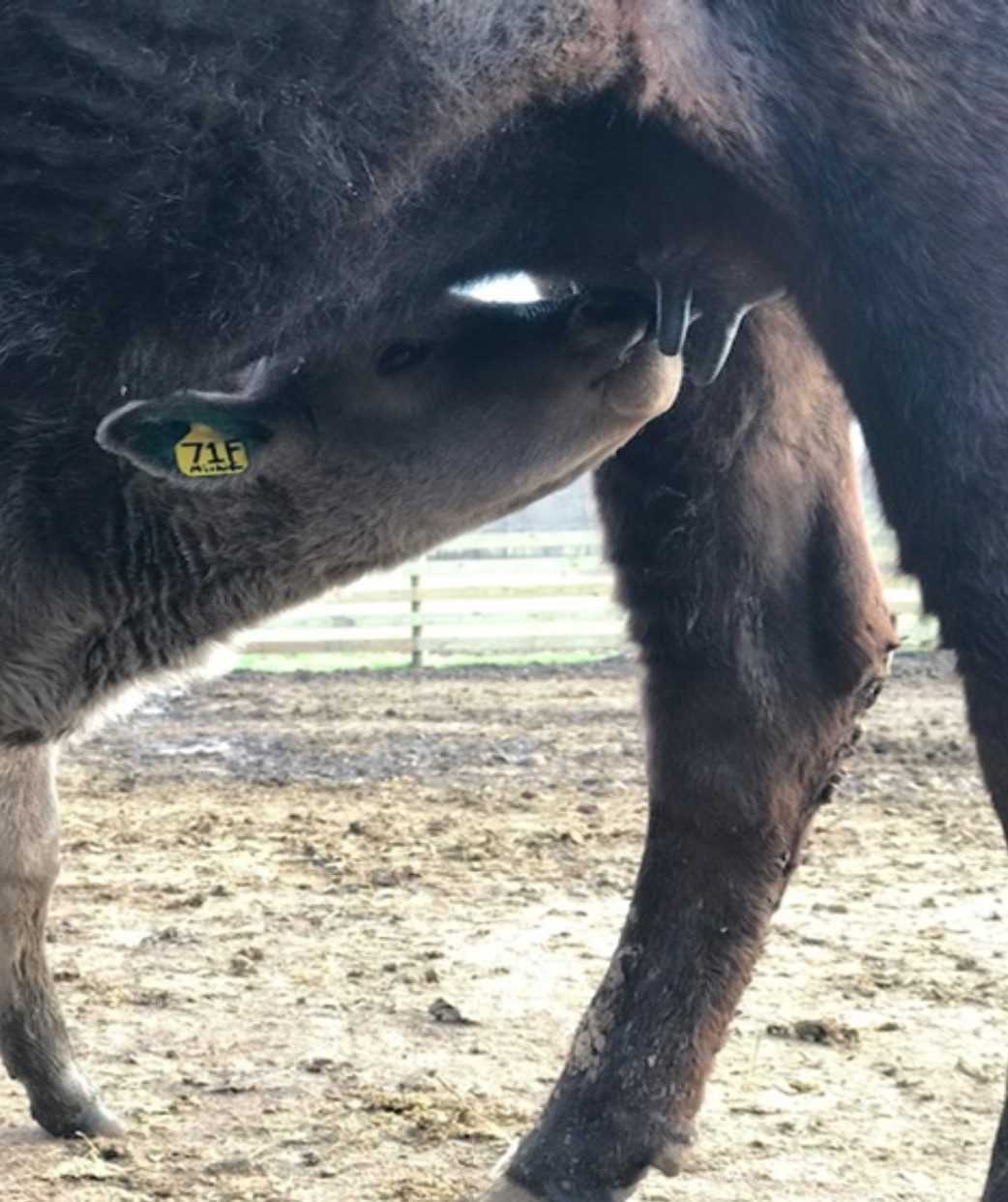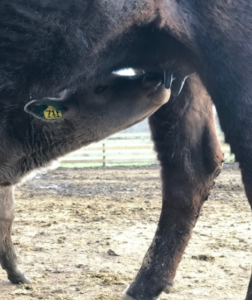
Early Weaning
 Early weaning of calves can be an effective management tool for breeders, due to early weaning’s ability to improve the overall cow herd performance, especially in terms of reproduction. The weaning age of beef calves is typically between 200-220 days, though it has been found that weaning earlier can have a positive effect on the cow-calf pair. While early weaning is not the answer all of the time, it can provide a practical alternative for certain situations. In the case of first calf Wagyu females, early weaning offers a realistic solu
Early weaning of calves can be an effective management tool for breeders, due to early weaning’s ability to improve the overall cow herd performance, especially in terms of reproduction. The weaning age of beef calves is typically between 200-220 days, though it has been found that weaning earlier can have a positive effect on the cow-calf pair. While early weaning is not the answer all of the time, it can provide a practical alternative for certain situations. In the case of first calf Wagyu females, early weaning offers a realistic solu
Milk production after freshening roughly doubles the daily energy and protein requirements for a typical beef cow. In considering cow performance, removing a calf earlier into lactation than the standard 200-220 days, reduces the quantity and quality of feed needed to maintain the cow. This significantly decreases the nutrient demands of the female, which is beneficial during conditions such as drought seasons, feeding purchased feed, and during late growing season when forage may be limited. It can make sense to conclude that it would be more efficient to wean the calf early and allocate feed resources directly to the calf to produce weight gain versus funneling feed resources to the lactating female to produce milk for calf weight gain. The nutritional stress typically associated with nursing and raising a calf can affect the female’s ability to cycle, get pregnant, and produce milk in the next lactation.tion for those females that do not produce enough milk to sustain their offspring.
Removing the nutritional demand associated with a nursing calf and lactation can be especially helpful in anestrus, thin cows that are difficult to breed. Removing the calf earlier helps improve body condition of the female, aiding in their ease to cycle and breed back earlier in the breeding season. Range Cow Research Center of Oklahoma State University (OSU) conducted two studies aimed at examining the effects of early weaning at 42-56 days, looking specifically at cow and heifer performance, weight gain, and rebreeding. Results from this study found that early weaning increased conception rates of very thin first-calf heifers from 50% to 97% and shortened the days to first estrus by 17 days. Furthermore, heifers and cows whose calves were weaned early were heavier at normal weighing time compared to those that raised their offspring. In the study, all mature cows with good condition and that had calves weaned early rebred and were confirmed pregnant, while only 81% of the cows that raised their offspring to 200-220 days rebred.
In looking further at the concept of early weaning, calves adapt quickly to change in their environment and diet if a management plan has been carefully developed. The first two weeks is a crucial time after early weaning. Calves have to learn to overcome the stress of weaning and start eating feed immediately after being removed from the female. There are fewer instances of morbidity and mortality in calves that learn to eat dry feed within 24-48 hours of separation. To ease the stress of the early weaned calf, it is suggested to limit the number of claves per pen and place one or two older calves in the pen. In OSU’s research, they observed that the newly weaned calves will follow the older calves to the feed bunk and waterers. Early weaned calves should be grown for a period of time before entering the feedlot, being put on grass pasture, or started on a finishing diet. Calves that are managed with this style of feeding program are efficient at converting feed to gain and offer a high proportion grade USDA average choice or better (Rasby, n.d.).
While early weaning of calves is not right for every program, it can be a practical and beneficial management tool. It is a concept that should be looked into by Wagyu breeders as a way to circumvent the limitations some Wagyu have with milk production. Early weaning has proved favorable to improving reproduction rates within the cow herd through lessening the nutritional demand on the lactating female and helping the female with poor body condition conceive. If you are considering implementing early weaning within your breeding program, it is important to work collaboratively with your veterinarian and nutritionist in advance to identify an appropriate management program.




